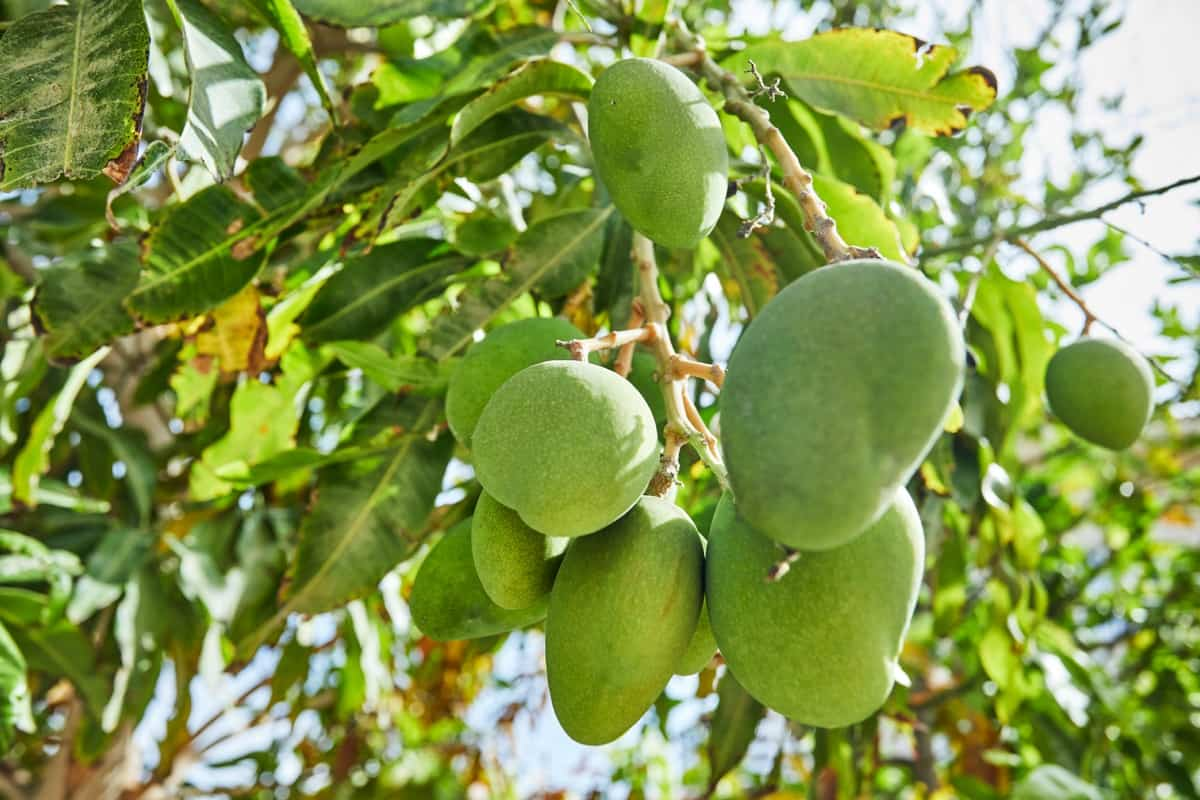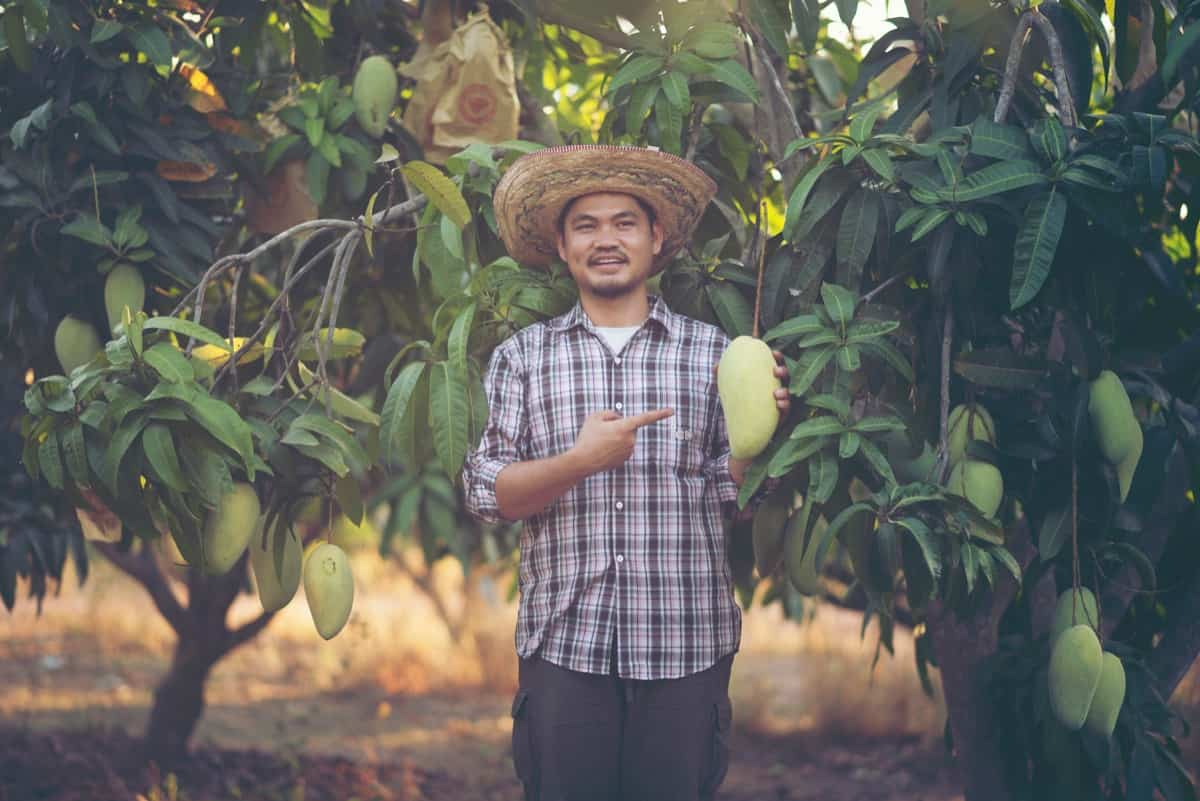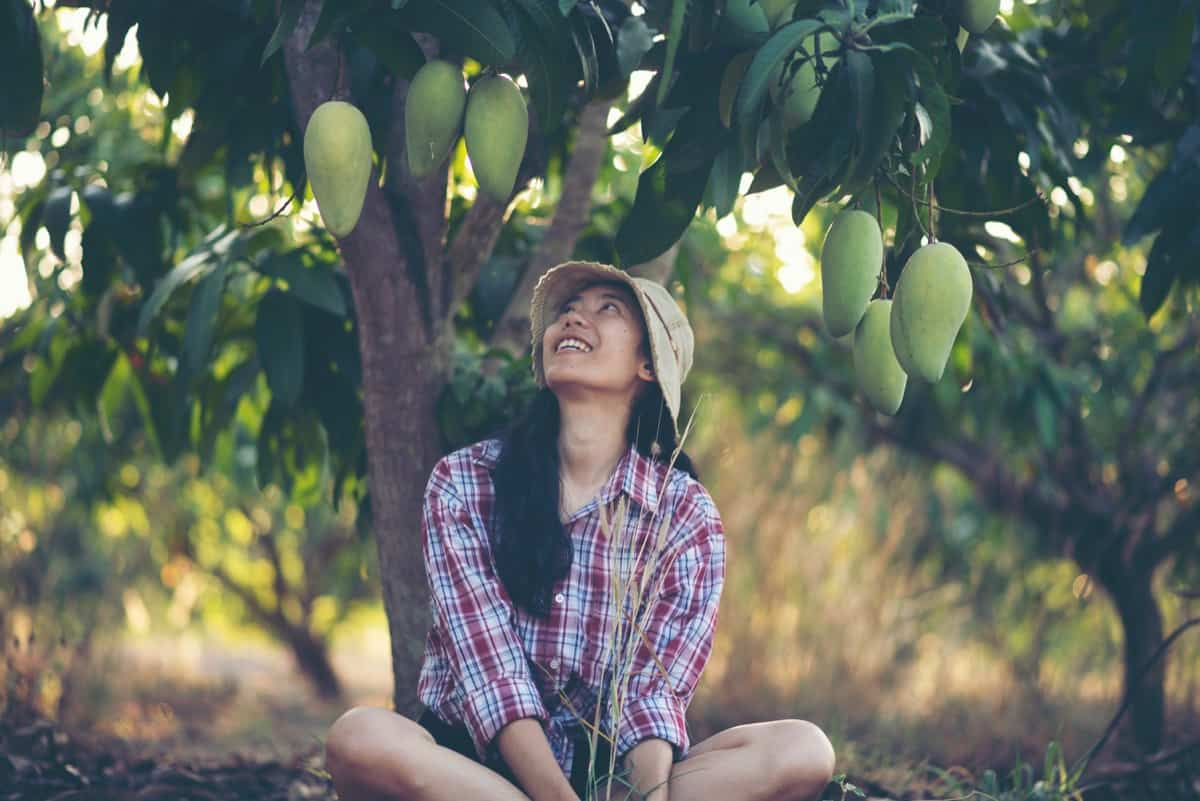Mango farming is a lucrative agricultural venture that requires careful planning and financial analysis. This report aims to provide a comprehensive overview of the costs involved in establishing and maintaining a one-acre mango farm and the potential profits that can be generated from such an investment.

What is Mango Farming?
The mango tree is an evergreen species that can grow up to 15-18 meters (50-60 feet) tall and has a long lifespan. Its lanceolate leaves are simple and can reach (12 inches) in length. The flowers are fragrant, pinkish, and small, arranged in large clusters at the end of branches. Some flowers have both stamens and pistils, while others have only stamens.
The mango fruit comes in various shapes and sizes, such as oval, round, heart-shaped, kidney-shaped, or elongated. Some mangoes are as small as plums, while others can weigh 1.8 to 2.3 kg (4 to 5 pounds). The fruit ranges from vivid shades of red and yellow to dull green. The fruit contains a flattened seed surrounded by yellow to orange juicy flesh, known for its distinctively sweet and spicy flavor.
Overview of Mango Trees: Biology, Production, and Uses
Mango (Mangifera indica), a member of the cashew family (Anacardiaceae), is a highly significant and extensively cultivated fruit in tropical regions. It is believed to be indigenous to southern Asia, particularly Myanmar and the Assam state of India, with numerous cultivated varieties. Mangoes are renowned for their great content of vitamins A, B, C, E, and K and minerals like magnesium, potassium, and manganese.
With just one cup (165 grams) of mango, you can receive nearly 70% of the recommended daily intake (RDI) of vitamin C, which supports immune system function, aids in iron absorption, and promotes cellular growth and repair. Mango trees are known for their deep taproot system, which helps them withstand drought conditions. They can also produce many fruits, making them economically important in the tropical regions where they are cultivated.
- Highest Production of Mangoes: The top five mango-producing countries globally are India, producing 18,779,000 tonnes; China, producing 4,771,038 tonnes; Thailand, producing 3,432,129 tonnes; Mexico, producing 2,197,313 tonnes; and Indonesia, producing 2,100,000 tonnes.
- Highest Production in India: The top four mango-producing states in India are Uttar Pradesh, Andhra Pradesh, Karnataka, and Bihar.
Market and Demand for Mango Farming
Mango is a highly favored fruit worldwide, cultivated in numerous countries. According to forecasts, the global mango market is projected to achieve a volume of 63.7 million metric tons (MMT) by 2023, demonstrating a compound annual growth rate (CAGR) of 3.9% throughout the forecast period. The escalating utilization of mango in beverages, processing, and confectionery products is anticipated to propel the demand for mango on a global scale. Nevertheless, challenges like seasonal availability and susceptibility to pests and diseases may impede the market’s growth.
Best High-Yielding Variety for Mango Farming
Amrapali: Amrapali is a high-yielding variety of mango known for its excellent taste and aroma. It originated from a cross between Neelum and Dashehari varieties. It bears medium-sized fruits with an average weight of 250-300 grams.
Ratna: Ratna is another high-yielding mango variety developed through crossbreeding Neelum and Alphonso. It produces large-sized fruits weighing around 350-400 grams. Ratna mangoes are characterized by their sweet flavor, rich aroma, and attractive yellow skin.
Sindhu: Sindhu is a high-yielding mango variety derived from the cross between Alphonso and Janardhan Pasand. It yields medium-sized fruits with an average weight of 250-300 grams. Sindhu mangoes are known for their distinct sweet taste and orange-yellow flesh.
Mishra Special: Mishra Special is a high-yielding mango variety developed by Dr. R.L. Mishra. It bears medium to large-sized fruits, weighing approximately 250-350 grams. Mishra Special mangoes are appreciated for their delectable taste, rich aroma, and juicy flesh.
Hybrid-10: Hybrid-10 is a high-yielding mango variety obtained from the crossbreeding of Amrapali and Neelum. It produces medium-sized fruits weighing around 250-300 grams. Hybrid-10 mangoes exhibit a delightful sweetness, aroma, and attractive appearance.
Cultivation Techniques for Mango Farming
Climate Requirements: Mango is a fruit that thrives in tropical and subtropical regions where frost is absent. It favors temperatures between 24° and 27°C and requires high humidity during its growth phase. Ideal fruiting conditions include low rainfall and relative humidity during flowering, fruit set, and harvest. However, mangoes may not yield optimally in warm temperate climates due to their sensitivity to cold temperatures.
Propagation Methods: Depending on desired cultivars and growing conditions, mango propagation can be achieved through seed planting or grafting. Depending on the variety, mango seeds can be mono-embryonic (single embryo) or poly-embryonic (multiple embryos).
In case you missed it: 9 Causes of Dying Mango Trees and How to Fix Them?

Planting: For mango cultivation, an acre can accommodate approximately 63 trees. In the dry zone, a spacing of 10 meters x 10 meters is recommended, while in the moist zone, a spacing of 12 meters x 12 meters is suggested. However, the ideal spacing would be 8 meters x 8 meters.
Training and Pruning:Mango trees, being evergreen, require minimal training and pruning. During the early years of planting, young plants are trained by removing side branches up to one meter from the ground level while allowing them to grow beyond that height. The crucial step in training a compact mango tree is making the first cut when the tree is just one year old and around 6 to 12 inches tall. This promotes the growth of new shoots, enhances the growth rate, and strengthens the tree.
Manuring and Fertilization: According to the National Horticulture Board (NHB), it is recommended to apply generous amounts of well-decomposed organic manure during the initial planting of mango trees and annually after that. This practice enhances soil quality and provides numerous beneficial effects for optimal growth and development.
Harvesting and Postharvest Management: Mangoes are typically harvested when they reach the mature physiological stage and ripen for optimal quality. Handpicking or using a harvester is common for fruit collection. The color of the pulp, turning from cream to light yellow, is a reliable indicator of maturity. Effective postharvest handlings, such as timely harvesting based on maturity, controlling sap burn, prompt washing, and cooling, are crucial to minimize losses and preserve the fruit’s quality and shelf life due to its high moisture content and delicate texture.
Project Report of 1-Acre Mango Farming
The components included in the cost of cultivation for Mango farming typically consist of seeds, land preparation, fertilizers, organic manure/compost, irrigation, weed management, pest and disease control, harvesting and threshing, postharvest management, and miscellaneous expenses.
| Components | Cost Range (INR) |
| Land preparation | 2,000 – 3,000 |
| Planting material | 3,500 – 4,500 |
| Fertilizers | 3,000 – 4,000 |
| Irrigation | 1,500 – 2,500 |
| Pesticides | 2,500 – 3,500 |
| Labour | 5,000 – 6,000 |
| Equipment and tools | 1,000 – 2,000 |
| Miscellaneous expenses | 2,000 – 3,000 |
| Total Cost of Cultivation | 23,500 – 25,000 |
Total Returns and Net from 1Acre Mango Farming
Total Yield
- Minimum yield: 2 tonnes = 20 quintals
- Maximum yield: 9 tonnes = 90 quintals
Total Revenue
- Minimum revenue: 20 quintals * 3600 INR/quintal = 72,000 INR
- Maximum revenue: 90 quintals * 3600 INR/quintal = 3,24,000 INR
- Cost of cultivation: 23,500 to 25,000 INR
Net Profit
- Minimum profit: Minimum revenue – Cost of cultivation = 72,000 INR – 25,000 INR = 47,000 INR
- Maximum profit: Maximum revenue – Cost of cultivation = 3,24,000 INR – 23,500 INR = 3,00,500 INR
In case you missed it: Mallika Mango Farming: A Comprehensive Guide to Planting, Pruning, Care, and Harvest

Challenges and Risks in Mango Farming
Mango farming poses various challenges and risks. These include susceptibility to pests and diseases, such as anthracnose and fruit flies, which can cause significant crop damage. Adverse weather conditions like drought, frost, or storms also pose risks to mango trees. Additionally, market fluctuations and price volatility can impact profitability for mango farmers.
Conclusion
The cost and profit analysis of a 1-acre mango farming project indicates that while initial investments and ongoing expenses are involved, the profit potential is promising. By implementing effective management practices, addressing challenges, and tapping into market demand, mango farming can be a viable and profitable venture for farmers.
- Feed Your Flock for Less: Top 10 Tips to Save on Chicken Feed
- Ultimate Guide to Ossabaw Island Hog: Breeding, Raising, Diet, and Care
- Hatching Answers: The Top 10 Reasons Your Chickens Aren’t Laying Eggs
- Eggs and Economics: Breaking Down the Cost of Raising Backyard Chickens
- Defend Your Greens: Proven Methods to Keep Iguanas Out of Your Garden
- Ultimate Guide to Cinnamon Queen Chicken: A Comprehensive Guide for Beginners
- Ultimate Guide to California Tan Chicken: Breeding, Raising, Diet, Egg-Production and Care
- Ultimate Guide to Marsh Daisy Chicken: Breeding, Raising, Diet, and Care
- 10 Types of Chicken Farming Businesses You Can Start for Profits